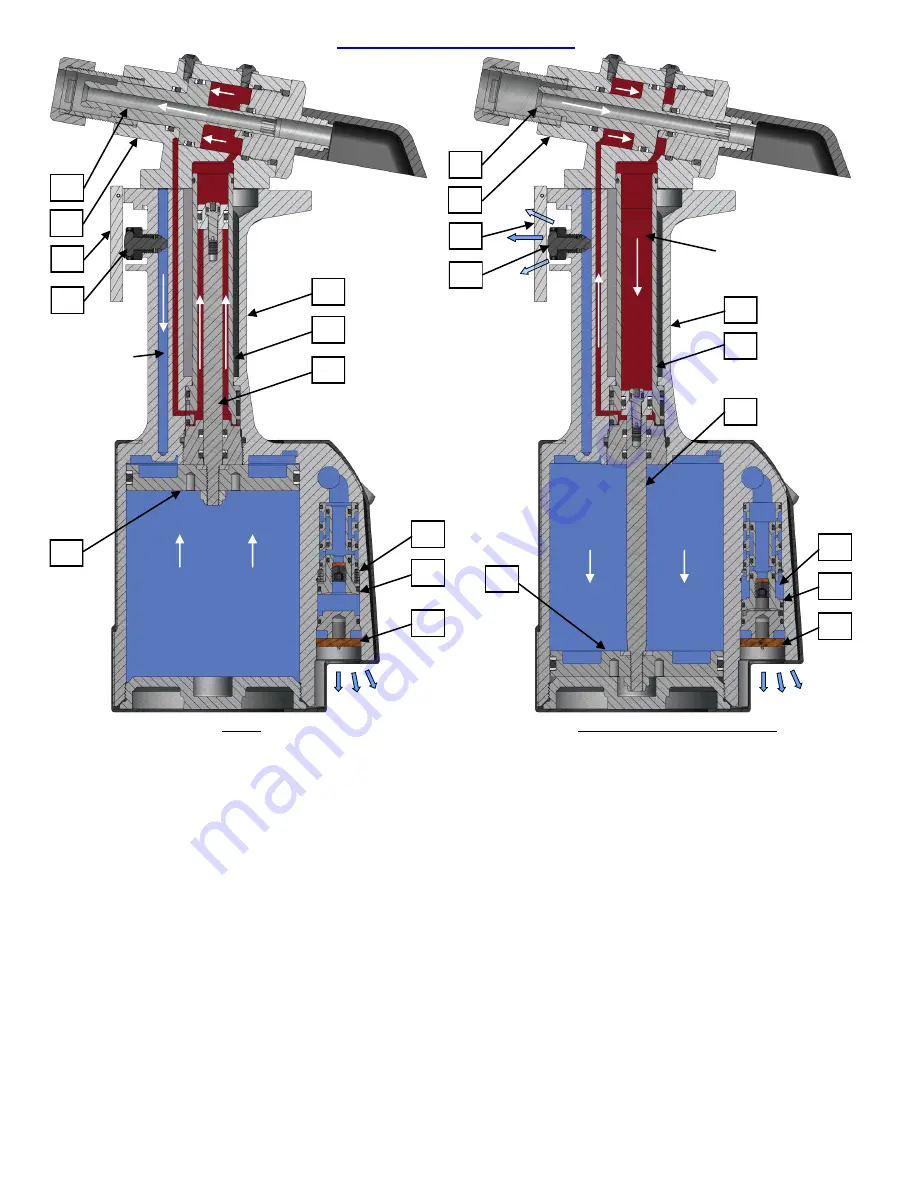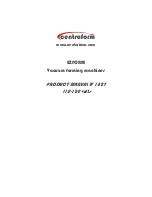
4
REV. 3/15
GB731 S/N: 1702 AND ABOVE
PLEASE CONTACT GAGE BILT FOR ALL OTHER SERIAL NUMBERS.
Image may not reflect actual tool
PRINCIPLE OF OPERATION
1
Air exhaust
Air actuator
pathway
3
5
10
11
9
8
7
air
air
air
air
Hydraulic oil
10
11
9
8
7
5
View 1
View 2 air actuator assy depressed
4
6
2
6
Air exhaust
1
3
4
2
1. When compressed air is connected to the tool (view 1) the air* fills the air actuator assy (4) pathway and is kept in check behind
the valve spool assy (10).
2. When the actuator lever assy (3) is depressed (view 2) air escapes through the air actuator assy (4) causing a drop in pressure.
The valve spring (9) is then released opening the valve spool assy (10). The compressed air is then ported by the valve spool
assy (10) to the air piston assy (5) pushing it downward. Air behind the air piston assy is exhausted through the muffler (11).
3. The downward movement of the air piston assy (5) pulls down on the piston rod assy (8). The hydraulic oil in the power cylinder
(7) is then pushed downwards and moves through the ports in the bottom of the power cylinder (7) up into the port in the handle
assy (6) and then up into the head cylinder (2).
4. The hydraulic oil pushes the piston (1) backwards while the internal components of the attached nose assembly are also moving
with the piston to start the fastener installation thus, transferring 4,800 lbs. (21.35 kN) of pulling force on the nose assembly and
fastener.
5. As this action is taking place the hydraulic oil behind the piston (1) is forced down into the power cylinder cavity as the piston
rod assy (8) moves downward.
6. When fastener installation is complete, the actuator lever assy (3) is released (view 1) air pressure builds again in the air actua-
tor assy (4) porting, compressing the spring (9). This action closes the valve spool assy (10) and redirects the air to the bottom
of the air piston assy (5) pushing it upwards. Air above the air piston assy is exhausted out through the muffler (11).
7. This action moves the piston rod assy (8) upwards pushing the hydraulic oil in the power cylinder (7) cavity upwards and
against the rear of the piston (1). This action generates a return force on the nose assembly pushing it off the installed fastener.
































